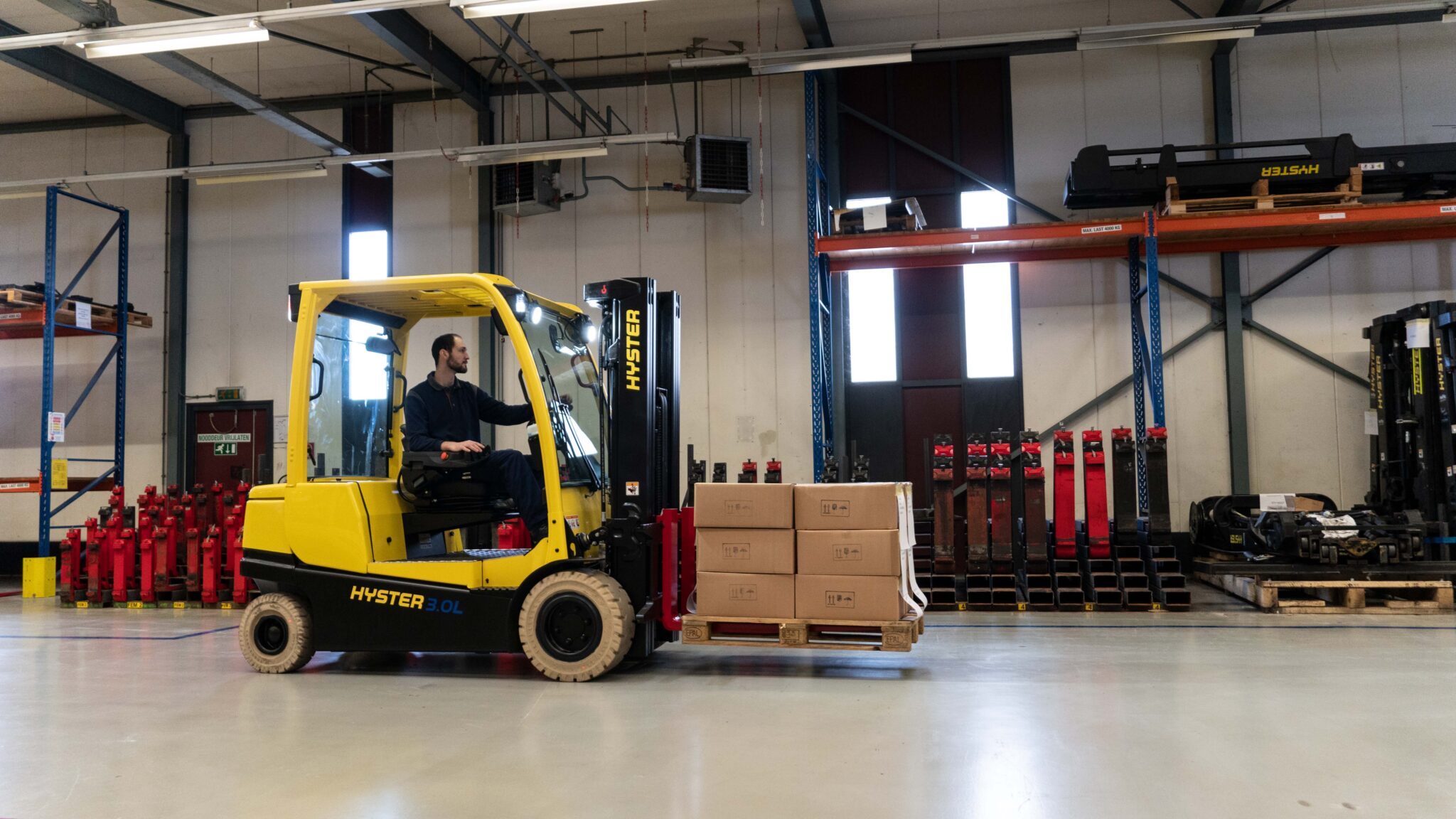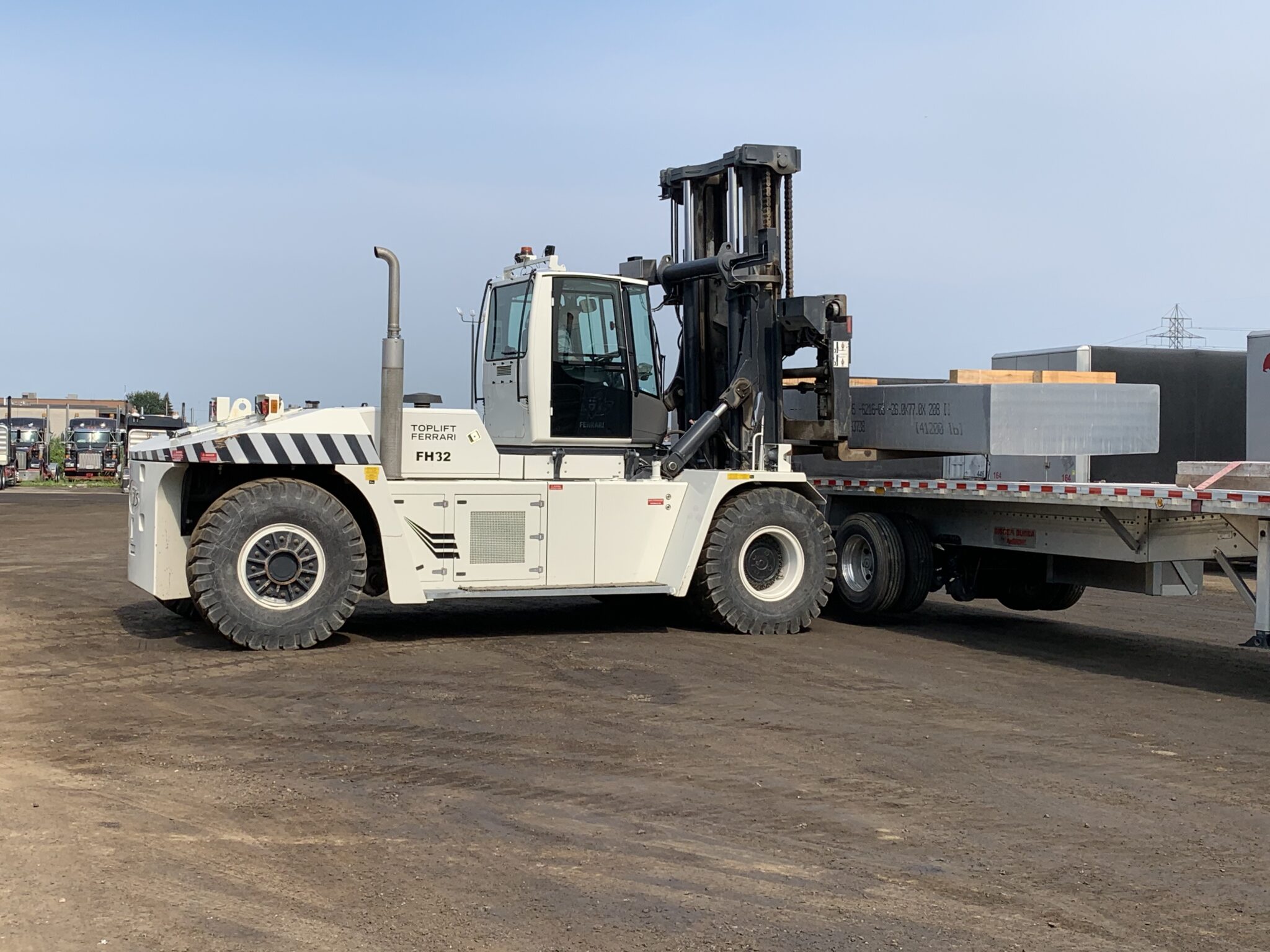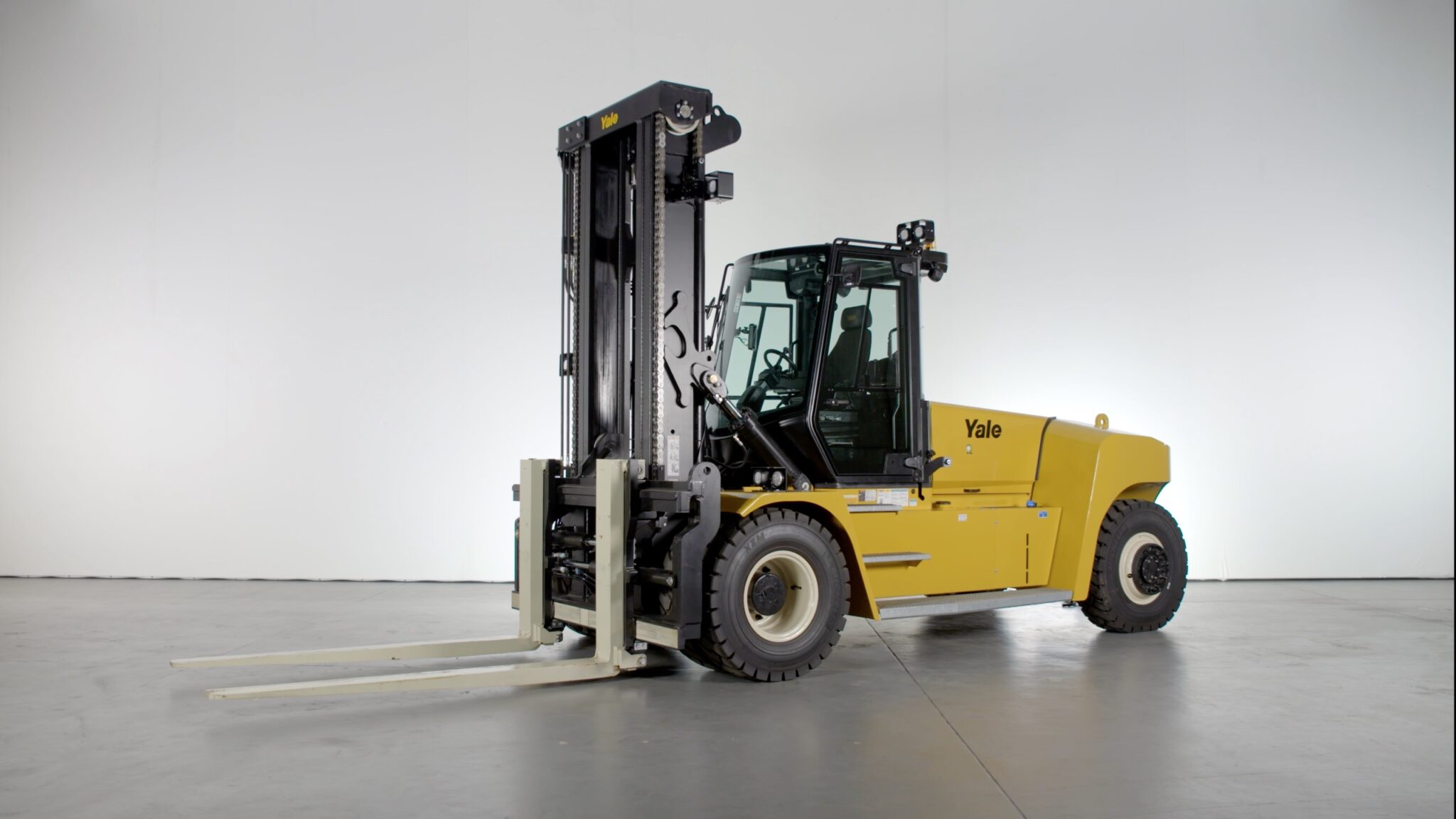Doosan has launched a highly versatile range of productivity enhancing electric reach trucks. Designed by a team of specialist engineers utilising customer feedback, the BR14JW 9-Series combines faster operating speeds with advanced ergonomics and greater driver comfort, making lighter work of heavy warehousing tasks.
As the latest additions to Doosan’s extensive range of warehouse trucks, the new 9-Series electric reach trucks are available in six moving-mast models with capacities between 1,400 and 2,500kg, and in three chassis types: Heavy, Narrow or Standard. All models are equipped with Doosan’s renowned Guardian Stability System and Smart Sensor control, reducing mast oscillation by 40%, for greater stability and safer load handling when operating at heights of up to 13m.
Every warehouse application
Businesses across a broad spectrum of industry – from manufacturing, wholesale distribution and food & drink to engineering, building supplies and transport & warehousing – will benefit from the improved efficiency, speed and performance of Doosan’s latest, 9-Series electric reach trucks. With warehouse space at a premium, maximising available storage space using a narrow-aisle, high-bay configuration combined with Doosan’s latest top performing reach trucks, can transform the capacity and productivity of a warehouse.
Making the most of the narrowest aisle widths, Doosan’s new ultra-compact BR14J-9 and BR16J-9 models are 12% narrower than the previous models, which together with a shorter chassis, offers a much tighter turning radius – allowing the operator to manoeuvre with confidence in aisles under 3m wide.
Providing heavyweight-lifting muscle, the BR20JW-9 and BR25JW-9 heavy models have the capacity to carry loads up to 2t and 2.5t respectively, and the standard BR14JW-9 and BR16JW-9 reach trucks offer all-round value and performance for standard applications.
Maximum productivity
Operational performance has received a boost in Doosan’s 9-Series, with design and engineering improvements delivering 15% faster travel speeds, 20% faster lifting speeds and 10% faster lowering speeds, helping to get the job done more quickly and efficiently.
Maximum manoeuvrability is available to the driver with a choice between 180°or 360° steering. The 360° steering system is easier on arms, wrists and shoulders when changing direction quickly or manoeuvering in tight spaces.
Stronger ergonomics
The sleek looks of the new 9-Series reach trucks are combined with sound ergonomics, taking safety, driver comfort, ease of maintenance and productivity fully into account.
The cab is designed for operator comfort and to reduce fatigue, with a fully adjustable premium Grammer suspension seat as standard, and excellent all-round visibility for safer manoeuvring with greater awareness. An upgraded mast design improves forward visibility and a new diagonal overhead guard offers enhanced visibility of the fork tips when working at height.
Other standard features are: an adjustable steering column, an easy and intuitive instrument panel, a wider armrest and plenty of leg room for driver comfort.
Optional extras include: Pre-height selection, side-shift auto-centring function, auto-tilt levelling, mast laser indicator, fork camera and joystick control.
A growing warehouse range
As part of a major upgrade programme of Doosan’s expansive warehouse truck range, the new 9-Series reach truck complements a growing list of enhanced products, including high-performance pedestrian stackers, powered pallet trucks, and platform double stackers, as well as a huge variety of three and four wheeled electric and IC counterbalance trucks in capacities from 1.3t to 25t. All reflecting the company’s commitment to delivering simple, powerful and robust equipment suited to customer needs.
Standard features across the warehouse range include low-noise and maintenance-free AC motors, electric power steering, regenerative braking, sensitive proportional hydraulics, multi-functional display for monitoring energy and machine status, turtle speed button, hydraulic damper for shock-free load lowering – all combined with a robust, compact chassis that offers high manoeuvrability in tight spaces and designed-in stability for lifting confidence and safety.
The warehouse range is fully supported by Doosan’s worldwide service network and backed-up by genuine Doosan parts, underscoring Doosan’s commitment to maximum performance with minimum downtime.
All new warehouse models reflect Doosan’s renowned design characteristics of compact functional form, high manoeuvrability, durability and rugged, reliable performance.
Ryan Lenihan, Commercial Director at Doosan Industrial Vehicle UK, says: “Productivity within the warehouse is a highly important focus for businesses in manufacturing and retail. Labour availability is under pressure across the UK and customer expectations for service and delivery is unrelenting, so companies need higher performance materials handling equipment to support their plans for productivity gains.
“The scale and scope of Doosan as a large global engineering business enables us to make significant, on-going investment into our warehouse product range – bringing design enhancements, new battery and charging technology upgrades, advanced safety features, and a whole range of performance boosting innovations.
“Our warehouse truck range and new models complement our extensive range of IC engine and electric counterbalance trucks. This is all part of a comprehensive remodelling programme that further supports Doosan’s position as a powerful brand supplying robust and reliable solutions across a broad spectrum of industrial activity – in the yard, the factory and the warehouse.”
Doosan’s all new 9-Series electric reach truck range offers everything a business needs in a reach truck to run a safe, high-performance warehouse.











